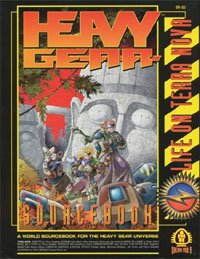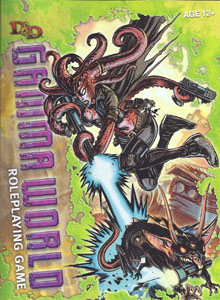 D&D 4th Edition Gamma World is neither D&D nor Gamma World nor a 4th Edition.
D&D 4th Edition Gamma World is neither D&D nor Gamma World nor a 4th Edition.
To boil that down: The newest edition of Gamma World is actually the 7th of that name. It is self-evidently not D&D. It also bears very little in common with previous editions of Gamma World (sharing with them neither setting nor mechanics).
With that being said, of course, one can still judge the newest Gamma World on its own terms. And what are those terms? Providing a “beer-and-pretzel” game that’s not meant to be taken very seriously, featuring fun, rapid-fire character creation plugged into an ultra-light chassis based on a super-streamlined version of the D&D 4th Edition rules.
And on those terms, the game is mostly a success.
CHARACTER CREATION
The core of character creation in Gamma World are the character origins. A random table of twenty different origins – Android, Felinoid, Hypercognitive, Speedster, Yeti, etc. – is provided. You roll twice and you character is the resulting combination of origins: Maybe you’re a Seismic Doppleganger; or a Giant Empath; or a Radioactive Hawkoid.
The origins you roll pre-determine the value of your prime requisites, but then you roll the rest of your attributes 3d6 in order. Your origins also provide you with bonuses to certain skills, and you’ll randomly determine another skill to receive a bonus.
At this point, everything else falls out in a fairly predictable pattern: Hit points. Armor class. Defense scores. Skill bonuses. Yada yada yada.
You get to pick your starting armor and your starting weapon, but everything else (including the rest of your starting gear) is randomly determined. The result is a character creation system which is theoretically very fast. In practice, I found that it bogged down a bit due to the calculations involved in combining two different origins. (Although this may improve as one becomes more familiar with the system.)
(Note, also, that the character sheets included with the game include a step-by-step walk-thru for creating a new character. The result, unfortunately, is a character sheet which is not terribly useful during actual play.)
What the system does succeed brilliantly at, however, is inspiring immense amounts of creativity as players seek to explain unique origin combinations.
When I rolled up a test character in the system, for example, I generated a Giant Hypercognitive. The result? The Jolly Olive Giant, seeking the lost legends of his tribe from before the Fall (when they were apparently provincial farmers) in order to unlock the secrets of greatness which are glimpsed in his furtive dreams of future potential.
My first real PC in the system was an Ectoplasmic Android. HAL Negative 9000 was the ghost of a shipboard AI from an alternate reality that crashed his spaceship into the Large Hadron Collider, triggering the apocalypse. Two arms of ectoplasmic iron have been bolted to his sides. He carries with him at all times an iPad 6 which he’s loaded up with a HAL 9000 soundboard app. He refers to the iPad as “Bob” and frequently has conversations with it.
What I’m basically saying is that this character creation system is fantastic. Flat out amazing. It forces the player to commit an act of creative closure in order to reconcile two disparate origins which have been artificially conflated, and provides enough random chaff (a skill, miscellaneous equipment, secondary ability scores) for inventive frisson. The result immediately catapults the player into their role while getting their creative juices flowing.
The game has received significant accolades and this extremely effective – and extremely exciting – character creation system has a lot to do with it.
ALPHA MUTATIONS
Your character will also possess alpha mutations. These are not, however, permanent features. Instead, you will draw a new alpha mutation card (a) every time you roll a “1” on a d20 or (b) at the end of every encounter.
(The explanation is that reality has been fractured by the Big Mistake that created the apocalypse. As a result, PCs can randomly “draw on alternate worldliness in which they naturally possess” these disparate powers.)
The goal appears to be to provide a constant flux of new tactical options in order to keep the game fresh and interesting.
In practice, however, I found that the churn rate on alpha mutation powers was too high. Because you’ll be forced to exchange your alpha mutation card at the end of every encounter, it creates a sense of urgency to use the power so that they don’t get “wasted”. The result is that the game seems to strongly “play itself” as you maneuver yourself into whatever position is necessary to trigger or use the current alpha mutation.
Perhaps this sense of urgency will be lessened once you’ve seen every power several times. But, if so, this seems equally problematic in other ways (as the game becomes stale).
Furthermore, I suspect that the root of the problem is not the novelty of the alpha mutation cards. Rather, it is the fact that the alpha mutation cards make up a significant portion of your interesting abilities in each encounter.
OMEGA TECH CARDS
You will also receive random Omega Tech cards. These are “artifacts of advanced technology” which each have a single power that can be used once per encounter. (A few exceptions do exist.) After each encounter in which they are used, there’s a 45% chance that they’ll malfunction and stop working.
Mechanically, the Omega Tech cards work just fine. Since they don’t automatically burn up at the end of each encounter, they provide a strategic resource that can be meaningfully managed.
What I don’t like abut the Omega Tech cards, however, is that they’re designed to be rewarded randomly at the end of an encounter. Basically, they’ve hard-coded the old silliness of a monster carrying magic items it doesn’t use into the system.
Also: If you have two decks of cards in a game which are never supposed to be inter-mixed with each other, please don’t use the exact same back for both sets of cards.
OTHER SHORTCOMINGS
The streamlining of the 4th Edition ruleset into a simpler version of itself is handled pretty well. Unfortunately, there are numerous places where this streamlining simply takes the form of incomplete rules. One prominent example is the lack of rules for vehicles and mounts, despite the fact that a new character’s random equipment is actually quite likely to include one or the other (or both). But there are also several places where rules will be referenced which don’t actually exist in Gamma World.
One of the effects of streamlining the 4th Edition ruleset, however, is that Gamma World even more heavily emphasizes encounter-based adventure design. For example, there are no daily powers and there are no healing surges. The result is that your character basically resets back to a clean slate at the end of each encounter. There is virtually no strategic component to the game: The game is entirely tactical… and entirely bland.
4th Edition’s penchant for “leveling up the game world” to match the current level of the PCs has also never been more blatant. Tasks throughout the rules are defined only as being “easy”, “moderate”, or “hard”. The DCs associated with each descriptor depends entirely on the current level of the PCs.
Finally, the index is abysmal. I’m assuming they just had someone randomly generate page numbers and then randomly pick words off the pages they generated. After filling half a page with half-hearted page references, they realized the futility of the task and quit.
ACCOUTREMENTS
It should also be briefly mentioned that the Gamma World boxed set includes a couple of poster maps and a decent number of high-quality cardboard counters.
I’m not a huge fan of WotC’s “brown, green, and glowy” style for battlemaps, but these are fairly well done.
The counter selection, however, simply confuses me. The PC counters only account for roughly half the possible origins (which is perhaps understandable), but inexplicably some of the origins represented are duplicated. The monster counters also represent only a subset of the two dozen creatures in the bestiary (which is also understandable), but are not even sufficient for running the encounters from the sample adventure.
FINAL THOUGHTS
There is a little doubt in my mind that character creation in Gamma World is a complete triumph. I could spend an entire afternoon just rolling up characters and spinning tall tales.
Unfortunately, I feel the character creation system is merely the capstone to a fairly lackluster system. The streamlining of the 4th Edition system only places an even greater emphasis on combat encounters. The high-churn of alpha mutation cards appear to fight a largely losing battle against the bland monotony of the combat, but the churn itself becomes a problematic gimmick.
Can a game survive on character creation alone? Maybe.
I haven’t actually given up on this game yet. (I’m hoping to play at least a couple more times, and I’ll probably slide over to the GM’s side of the screen at least once before I’m done.) If it wasn’t for the character creation, that certainly wouldn’t be true.
But while the character creation makes me wish I could give this game a ringing endorsement, the reality of playing it (at least to date) makes that impossible. If it’s caught your attention, I won’t say that you should write it off. But you will want to approach it with a fair bit of caution.
Style: 4
Substance: 3
FURTHER READING
Gamma World – The Sample Adventure
Gamma World – Playtest Report
Gamma World – The Egyptian Incursion
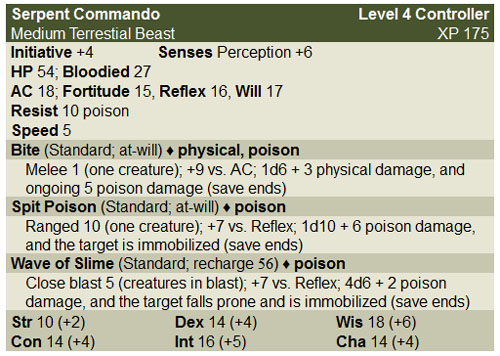
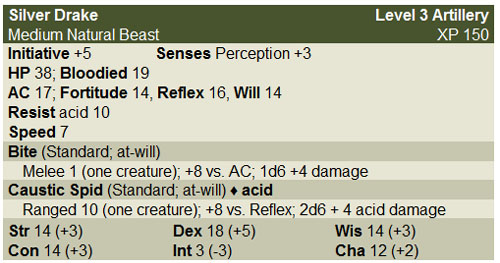
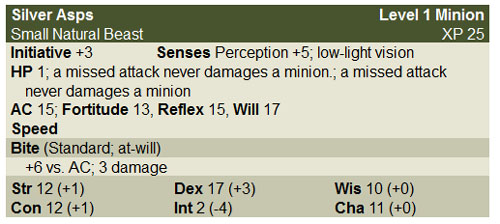

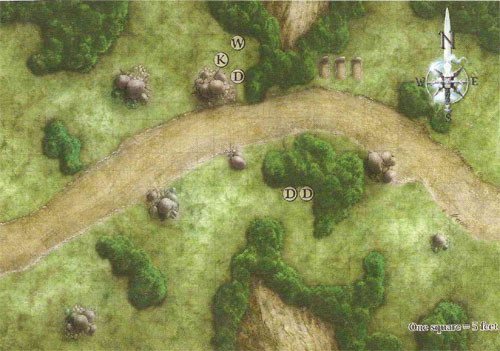
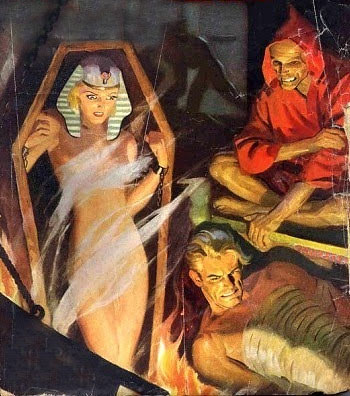 BACKGROUND: Over the past few months, intermittent meteors have been hitting the area around town. The force of the meteor impacts (or perhaps something special about these particular meteors) have been tearing open interdimensional rifts. Locals have started referring to them as “techno-meteors” because high-value tech has often been found in the area around the impact craters.
BACKGROUND: Over the past few months, intermittent meteors have been hitting the area around town. The force of the meteor impacts (or perhaps something special about these particular meteors) have been tearing open interdimensional rifts. Locals have started referring to them as “techno-meteors” because high-value tech has often been found in the area around the impact craters.
